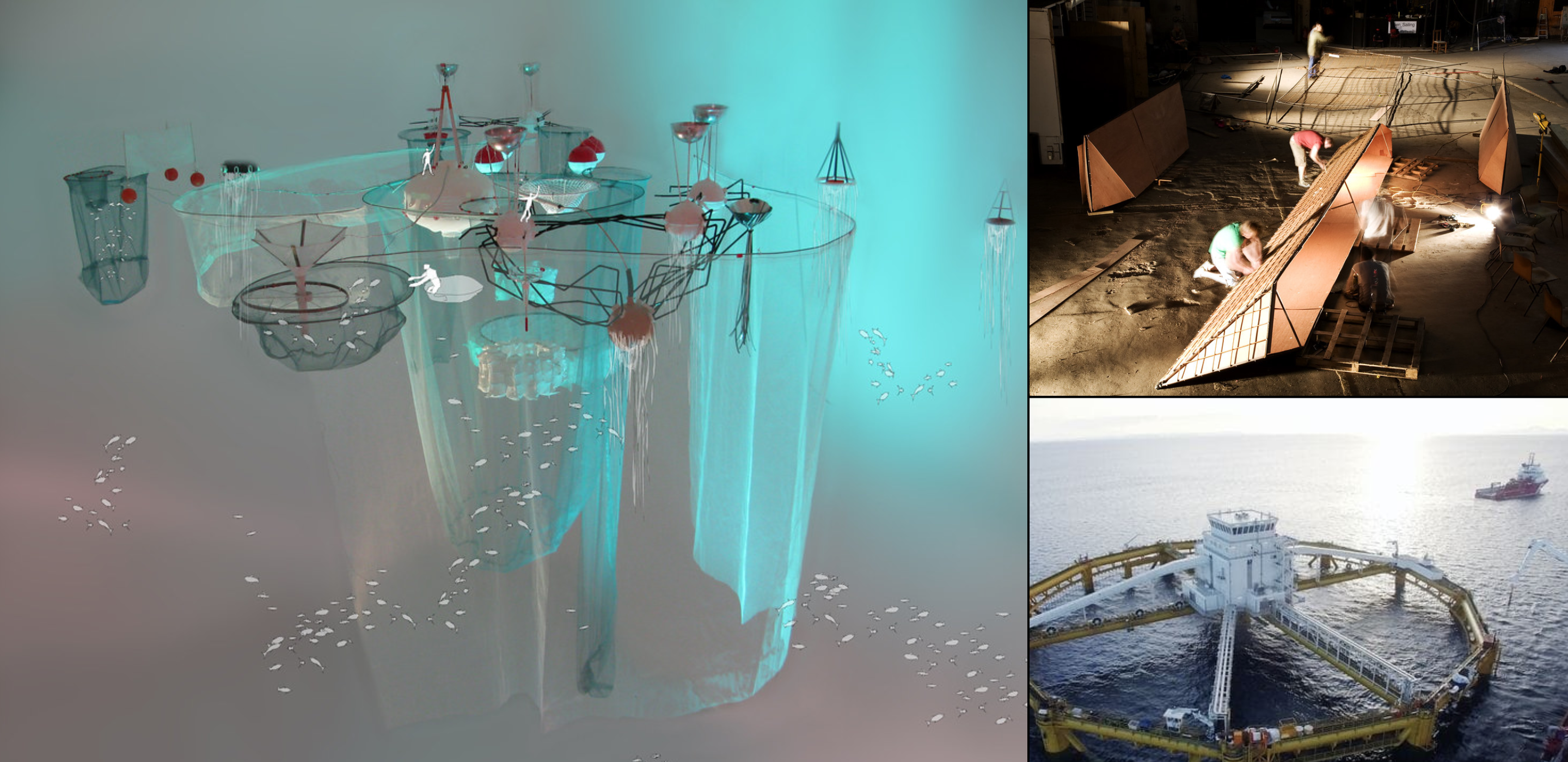
Floating Marine Laboratory
Subtitle: Floating Marine Laboratory for Ocean Research & Development
Overview
We are designing an innovative ocean science and entrepreneurship infrastructures. A floating laboratory for research and development to study the ocean and develop sustainable solutions for Hong Kong waters and the world.
The ocean is where all life comes from and our future depends on it. The ocean covers more than 70% of our planet’s surface and absorbs most of the heat from the sun, therefore controlling earth’s climate. But our oceans are mostly unexplored while being overfished, polluted with plastic, industrial and agricultural run-offs and radioactive substances. The ocean is suffering a rapid biodiversity decline without much general public awareness and more so lacking significant action to reverse this deadly trend.
- (A) Research vessels tend to be very expensive, unsafe and environmentally damaging. It is a design challenge.
- (B) The speed between science and impact is too slow. That is a culture, management and legal challenge.
- (C) Current marine business models are unsustainable. That is an economic and environmental challenge.
Let’s assume that the people involved in this project want to (C) develop commercial activities that heal the ocean, and (B) share information freely so that positive change can accelerate and spread. What would this (A) new design of floating research and development infrastructure look like and operate? Hong Kong is a coastal city in the middle of the world’s largest urban area -the Greater Bay- with over 70 million people. Hong Kong is also a biodiversity hotspot that needs to be preserved. HKU has a great ocean science faculty and easy access to the water. How will we design a new type of floating maritime laboratory that is safe, affordable, and environmentally friendly?
You can read the brief here. The nice looking landing page is here. The Wiki with all the background research and process is here.
Course Objectives
Pt 1: Research & Design We will interview ocean scientists, industrialists, traditional coastal communities to understand their needs and how they envision their future in the “blue economy”. We will document our conversations, and use Open Source collaboration platform (github, wiki) to design together.
Pt 2: Small scale prototype testing We will build and test small scale prototypes that we will demonstrate to stakeholders. They evaluate the structure for safety, maneuverability, ease of operations, scalability, maintenance, sustainability and cost.
Pt 3: Full-scale prototype testing Depending on the design, we will build at scale one design and test essential functions of the floating laboratory in safe waters.
As much as possible we will use measurable criteria from the industry, and frequently assess presentations and works. Students will be guided and encouraged to reach out of the department on the campus to collaborate, and reach out of the campus to experts. As an architect, creating for extreme environments and users is a powerful way to foray a career in cutting edge innovation and gain confidence dealing with interdisciplinary constraints.
Table of Contents and Quick Links
- Landing Page
- Brief and timeline
- Wiki
- Methodology
- Background Research
- Individuals Designs
- Group Model
- Construction Planning
- Prototype
- Conclusions
- Further Research
Installation
There is currently no installation package, but the intention is to release the designs as version packages, ready to download.
Usage
This work is Open Hardware, so we invite anyone to build on top of this design, make them better, and sharealike, using the same Open Hardware License.
Contributing
- Most of the progress in the early stages are on the wiki
- Anyone is welcome to join the team
- If you struggle with the project or request project moderation, you can reach out to Cesar Jung-Harada
Credits
Individuals
- Cesar Jung-Harada, harada@hku.hk, Faculty, University of Hong Kong
- Chan Cheong Kit
- Chan Yuet Sum Canossa
- Kaufmann Maximilian Ferdinand
- Lau Ho Chuen Maxwell
- Lee Gavin Yu Hin
- Lu Xiner Cena
- Sin Chung Kei Nathan
- Sun Zhengyu
- Tsang Hoi Lam Jessica Mary
- Wong Tsz Ching Ceci
- Wu Ho Ting Silver
- Yeung Hin Oswin
- Yuen Ka Ho Kelvin
- Zhang Houzhe
- Ng Kwok Jing James
Past Contributions
- 2009: Cesar Jung-Harada, Royal College of Art, London
- 2009: Ars Electronica, Golden Nica, Linz, Austria
- 2010: Open_Sailing Collective, Global
- 2011: “29 chains to the moon” curated by Andrea Grover, Carnegie Mellon University
- 2011-2019: Cesar Jung-Harada, Goldsmiths University, London
- 2020: Master of Architecture, The University of Hong Kong.
License
- Technology: CERN Open Hardware Licence
- Code: MIT License
- Images, videos, 3D files, Creative Commons 4.0